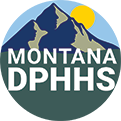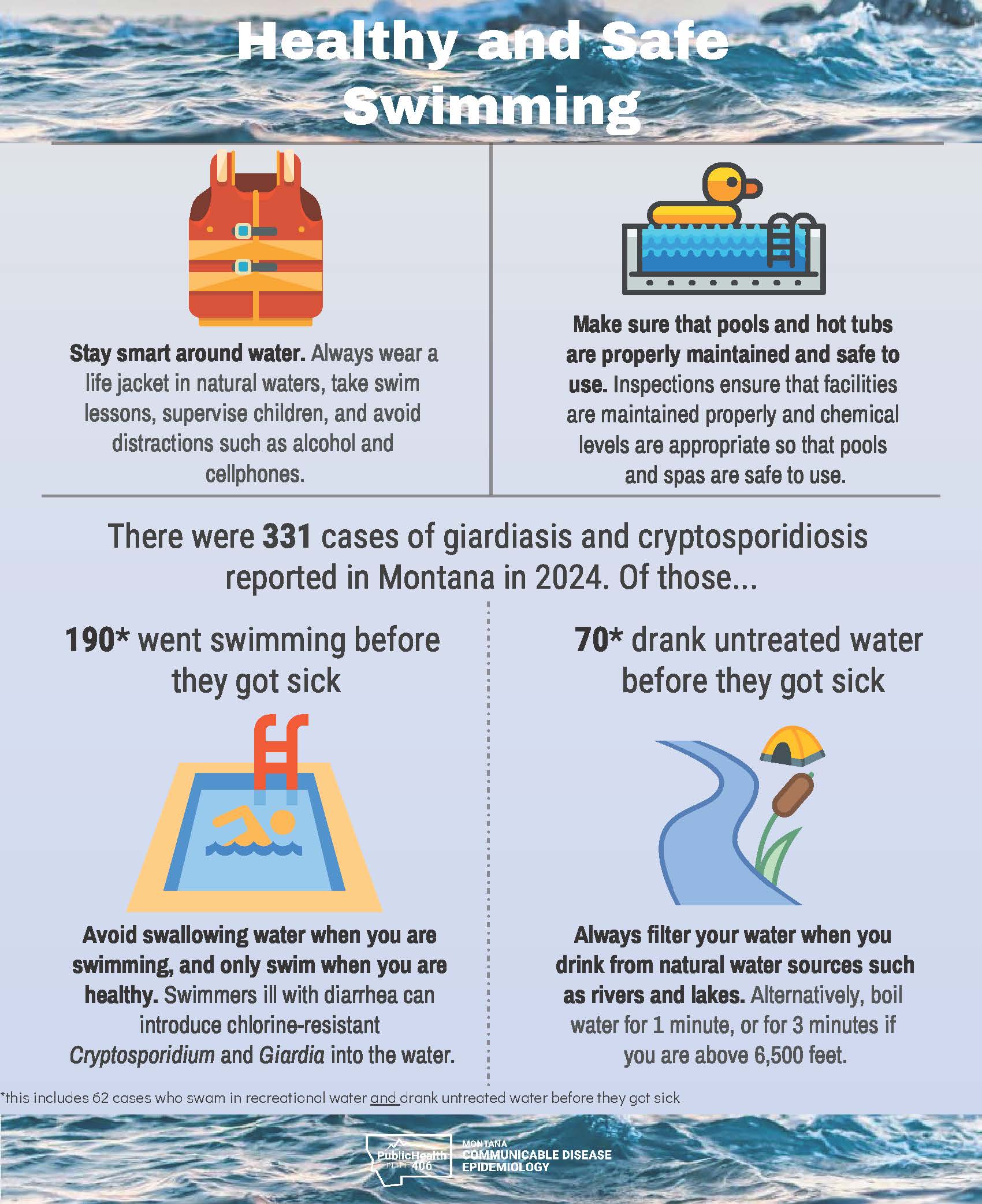Recreational Water Illness and Injury
Prevention
The most common waterborne diseases reported in Montana are giardiasis and cryptosporidiosis. In 2024, there were 331 cases of giardiasis and cryptosporidiosis reported in the state, which is nearly double the number of cases reported in 2023. A large outbreak of cryptosporidiosis linked to recreational water exposure occurred in the summer of 2024. Over 100 symptomatic people were associated with this outbreak, linked primarily to recreational water exposure (pools and natural bodies of water in southcentral Montana). Cryptosporidium, the parasite that causes cryptosporidiosis, is resistant to chlorine and can be difficult to treat even in properly maintained pools. The best way to prevent the spread of cryptosporidiosis is to not swim while having diarrhea, or for two weeks after symptoms have ended.
DPHHS is encouraging Montanans to stay healthy when swimming by following these prevention steps:
-
Shower with soap before entering a pool
-
Don’t swim when you have diarrhea (or for two weeks after symptoms have ended if you were diagnosed with cryptosporidiosis)
-
Avoid swallowing pool water, or water from lakes/rivers/streams
-
Always treat your water when you drink from natural water sources, such as rivers and lakes
-
Supervise swimmers, especially young and inexperienced ones - be a role model for others
-
Learn life-saving skills
-
Use life vests where applicable
-
Avoid distractions such as alcohol, drugs, or cell phone use around water
What You Need To Know
Drowning deaths are most common in Montana between June and August and are more likely to occur in natural bodies of water. Over the past ten years, there have been an average of 20 drowning deaths per year in Montana - almost half of these deaths are due to drowning in natural waters. Every day, three children under the age of 14 die from drowning in the United States.
Cryptosporidium and Giardia are two of the most frequent causes of waterborne disease among humans in the United States. There were 331 cases of cryptosporidiosis and giardiasis reported in Montana in 2024. Of those cases, 60% had recreational water exposure or drank untreated water (for example, swam in a public pool or drank unfiltered water from a river while camping) in the days before they became ill.


